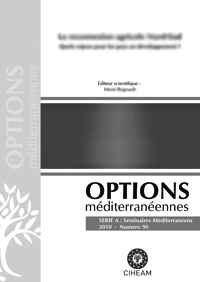| Article précédent | p. 203-207 | Article suivant |
Crop rotation, nitrogen fertilization and genotype effects on durum wheat productive characteristics
A field trial was performed in 2000-01 and 2001-02 in the experimental farm 'Sparacia' (Cammarata, AG, Sicily) in order to evaluate the qualitative and quantitative response of four varieties of durum wheat when grown after a legume crop (field pea) or in rotation with itself and when submitted to different N-fertilization levels: no fertilization (N0, control), 60 kg per ha (N60, rate advised by the EC no. 2078-92 for the Sicilian territory) and 120 kg per ha (N120, fertilization rate commonly used under the 'traditional' cropping technique). In the first trial year, the fertilized trial expressed a better yield performance than the control, but in 2001-02, characterized by severe and prolonged dry periods, the effect of crop rotation and variety was shown to be more important.
- [ Afficher ]
- [ Télécharger ]
- [ Exporter la citation ]
Vous pouvez télécharger la citation au format :
- [ Imprimer ]
- [OMA60]



